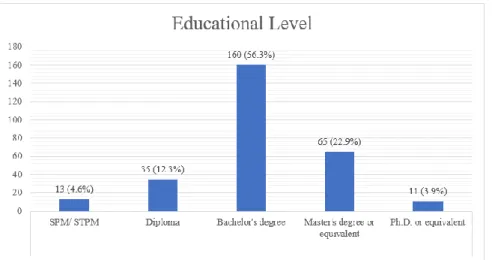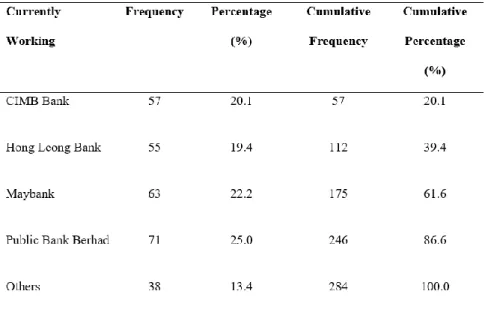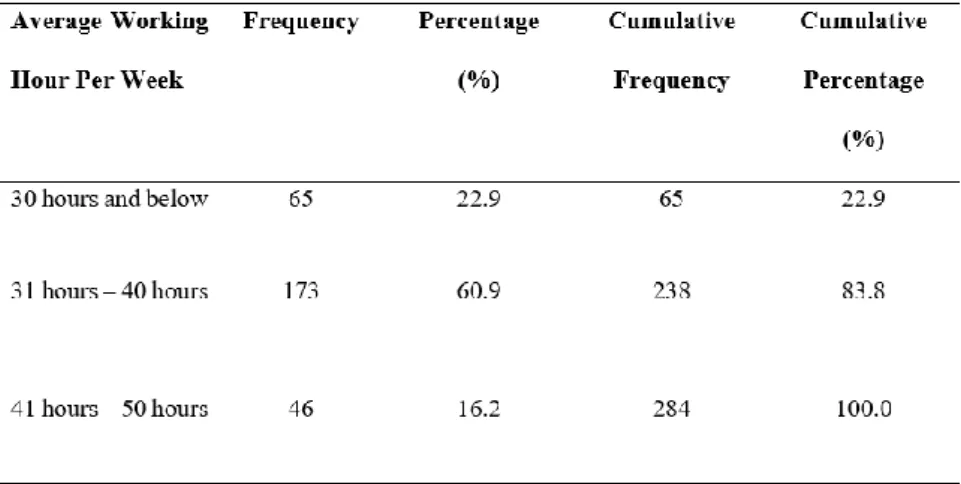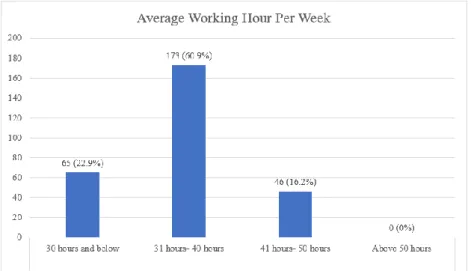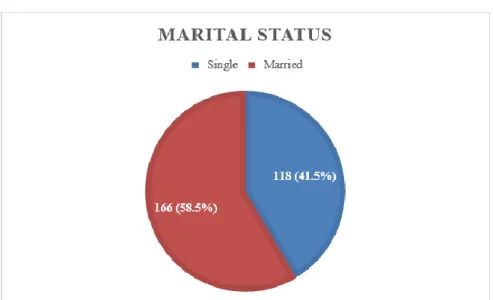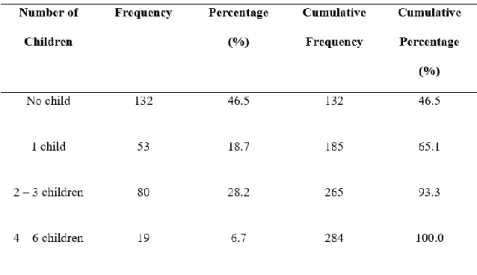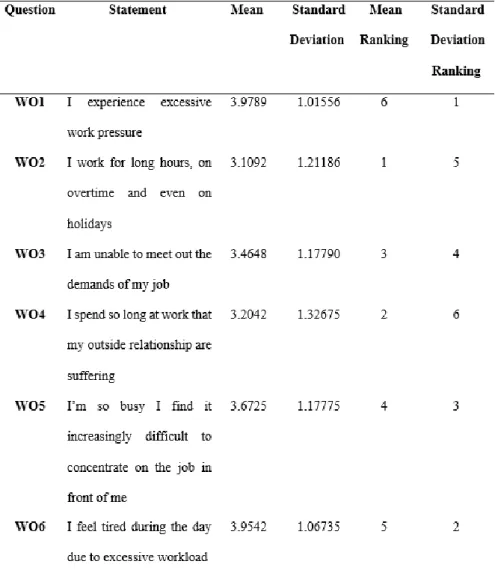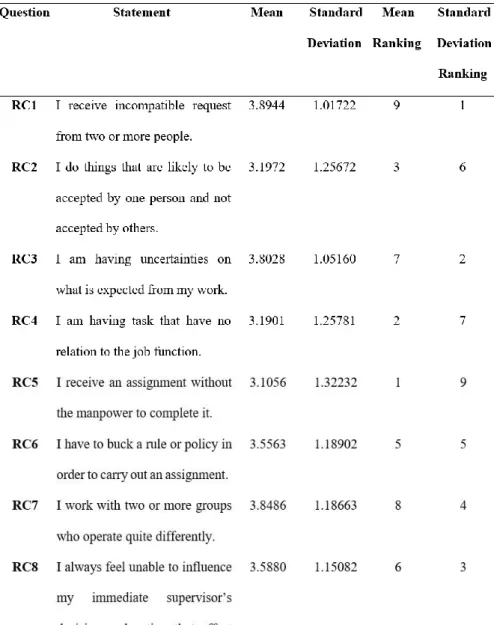For giving their unlimited support, assistance, encouragement and motivation during the completion of this research project. The topic of this research is “The influences of work overload, role conflict, work-family conflict and career progression on work stress among employees in the banking sector”.
INTRODUCTION
- Introduction
- Research Background
- Research Problem
- Research Objectives
- General Objective
- Specific Objectives
- Research Question
- Hypothesis of the study
- Research Significance
- Theoretical Perspectives
- Practical Perspectives
- Chapter Layout
- Chapter Summary
RQ3a: Does work-family conflict affect the job stress of employees in the Malaysian banking industry. RQ3b: Does family-work conflict affect the job stress of employees in the Malaysian banking industry.
LITERATURE REVIEW
- Introduction
- Underlying Theories
- Conservation of Resources Theory
- Job Demands-Resources Model
- Review of variables
- DV- Job Stress
- IV- Work Overload
- IV- Role Conflict
- IV- Work-Family Conflict
- IV- Career Development
- Proposed Theoretical/ Conceptual Framework
- Hypothesis Development
- Work Overload and Job Stress
- Role Conflict and Job Stress
- Work-Family Conflict and Job Stress
- Career Development and Job Stress
- Chapter Summary
Resources likely to be located at the organizational level (such as job security, salary, career opportunities), interpersonal and social relationships (such as maintenance of supervisors and colleagues, team atmosphere), work organization (such as clear roles, decision-making participation) and task level (such as feedback performance, skill diversity, task importance , task identity, autonomy) (Bakker et al., 2004). Such shifting of roles has led to work-family conflict (work-to-family conflict (WFC) and family-to-work conflict (FWC)) (Tabassum et al., 2017).
RESEARCH METHODOLOGY
- Introduction
- Research Design
- Data Collection Method
- Sampling Design
- Target Population
- Sampling Frame and Sampling Location
- Sampling Elements
- Sampling Technique
- Sampling Size
- Research Instrument
- Questionnaire Survey
- Pilot Test
- Construct Measurements
- Nominal Scale
- Ordinal Scale
- Interval Scale
- Origin Measure of Construct
- Data Processing
- Data Checking
- Data Editing
- Data Coding
- Data Analysis
- Descriptive Analysis
- Reliability Analysis
- Inferential Analysis
- Chapter Summary
In the study itself, the questionnaire was distributed to the respondents who work in the Malaysian banking sector through online platforms such as email, WhatsApp, etc. The purpose of this study is to explore the influence of work overload, role conflict, work-family conflict and career development against job stress among employees in the Malaysian banking industry. The sampling frame is a listing of each individual in the target population that is relevant (Populations and Sampling, n.d.).
Moreover, most of the potential respondents and acquaintances known to the researchers work within the shores of these three states. In the questionnaire, five questions applied nominal scale in Section A, which are Question 1 (Do you work in the bank?), Question 2 (gender), Question 4 (ethics group), Question 6 (Organization where you currently work?), and Question 9 (marital status). In the Questionnaire, the questions that used the ordinal scale in Section A are Question 3 (age) and Question 5 (highest level of education).
This will help to detect any error or missing answers in the questionnaire before the questionnaires are distributed. It is presented quantitatively in the text or tabular ways and graphs in the figures (Vetter, 2017). In the current research, MLR will be conducted to measure the relationship of various IV (such as work overload, role conflict, work-family conflict and career development) with job stress.
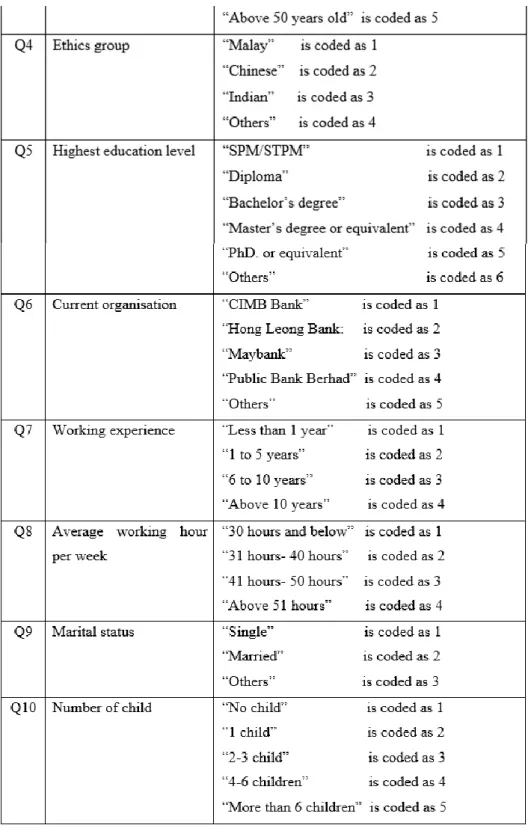
DATA ANALYSIS
Introduction
Descriptive Analysis
- Respondent Demographic Profile
- Central Tendency of Measurement
The RC1 had the highest average of 3.8944, proving that most respondents agreed with this statement. The highest average of 3.4155 is FWC4, proving that the majority of respondents acknowledge this statement. The JS5 is the highest average at 3.7183, proving that most respondents agree with this statement.

Scale Measurement
- Reliability Test
In short, each variable's alpha coefficients are between 0.80 and 0.95, indicating that all variables have extremely good reliability.
Inferential Analysis
- Pearson Correlation Analysis
- Multiple Linear Regression Analysis
The data in Table 4.19 show that the R-value of 0.725 is a positive relationship between work overload and work stress of an employee. The data in Table 4.20 show that the R-value of 0.742 is a positive relationship between role conflict and job stress in an employee. The data in Table 4.21 show that when the R-value is 0.643, the relationship between work-family conflict and employee job stress is positive.
Then, the positive correlation coefficient reveals that the increase in work-to-family conflict will increase employees' job stress. Data in Table 4.22 shows when R-value is 0.496, the relationship between family-to-work conflict and employee's job stress is positive. Then the positive correlation coefficient shows that the increase in family-to-work conflict will increase employees' job stress.
The data in Table 4.23 shows that when the R value is -0.055, the relationship between career development and employee job stress is negative. H3a: Work-family conflict has a significant impact on employee job stress in the Malaysian banking industry. H3b: Work-family conflict has a significant impact on employee job stress in the Malaysian banking industry.
Conclusion
Alternatively, when considering the controls for variance explained by all other variables within the model, role conflict explains the largest amount of variance in DV (job stress). When compared to the other IVs, work overload is the second most important IV affecting DV (work stress), as the beta value (under standardized coefficients) for this predictor variable is the second largest , 0.292. Consequently, when the variance explained by all predictor variables in the model is controlled, job overload makes the second strongest unique contribution to the analysis of variance in DV (job stress).
When compared to the other IVs, work-family conflict is the IV that contributes the third highest amount to the change in DV (work stress). As the beta value (under standardized coefficients) for this DV is the third largest, which is 0.122. Henceforth, work-family conflict makes the third most important contribution to explaining the variation in DV (job stress), when the variance explained by all other predictor variables is taken into account.
The beta value for this DV (work stress) is the smallest (0.023) compared to other variables. This suggests that career development and family-to-work conflict make the least contribution to explaining variance in the DV (employee stress), when variance explained by other predictor variables in the model is taken into account. Pearson's correlation coefficient and MLR analysis results were calculated using SPSS software that analyzed the relationship between the DV (work stress) and IVs (work overload, role conflict, work-to-family conflict, family-to-work conflict and career development) show.
DISCUSSION AND CONCLUSION
Introduction
Summary of Statistical Analysis
- Summary of Central Tendency Measurement
- Summary of Inferential Analysis
In this study, the F statistic was found to be significant as the p value of 0.000 was less than the alpha value of 0.05. Furthermore, the p-value of 0.000 for both job overload and role conflict were less than 0.05, which means that these two variables are significant in measuring the job stress of employees in the Malaysian banking industry. Furthermore, WFC, FWC and career development were insignificant for the dependent variable (DV): job stress as their p-values exceeded the alpha value of 0.05.
Furthermore, the R-squared value of 0.602 also indicates that the independent variables (IV): work overload, role conflict, WFC, FWC and career progression can explain 60.2% of the variation in the work stress of employees in the Malaysian banking sector.
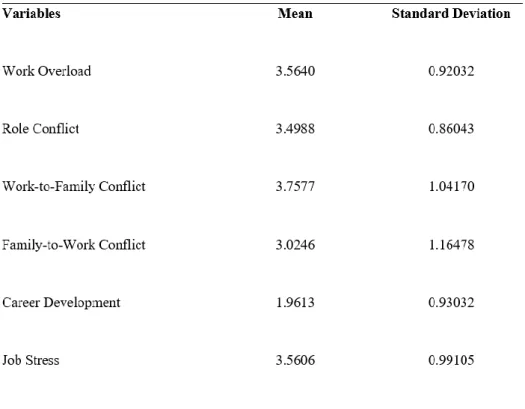
Discussion of Major Findings
- Hypothesis 1: Work Overload has a significant impact on employees’
- Hypothesis 2: Role Conflict has a significant impact on employees’ job
- Hypothesis 3a: Work-to-Family Conflict has a significant impact on
- Hypothesis 3b: Family-to-Work Conflict has a significant impact on
- Hypothesis 4: Career Development has a significant impact on
Based on the findings, role conflict has a significant impact on employee job stress in Malaysian banking industries. 2014) studies are consistent with this research, which shows a significant relationship between role conflict and employee job stress in the banking industry. The feeling of worry would then bring in the future to increase the incidence of work stress in the banking industry.
Also, the findings of Parvaiz et al. 2015) are consistent with this study and show the significant impact of role conflict on the work stress of banking sector employees. In detail, they proposed that in day-to-day bank operations, conflicting demands from role conflict cause employee job stress. Based on the findings, WFC has an insignificant impact on job stress among employees in Malaysian banking industries.
Based on the results, FWC has an insignificant influence on job stress among the employees in Malaysian banking sectors. Based on the findings, career development has an insignificant impact on job stress among Malaysian bank employees. Based on the bank employees' feedback, their job stress comes to a greater extent from sales, customer service, complaints, rules and regulations, compliance, ethical rules, etc.
Implications of the Study
- Managerial Implications
In addition, bank managers should ensure a consistent demand for tasks, although conflicting demands can add challenges and train employees. Therefore, bank managers are encouraged to correct the tasks' number per day and allow inconsistent claims during an emergency or unexpected incidents. From now on, management should organize the workplace in such a way that workers are driven to find a balance between work and family life.
Thus, the present study advocates that the manager should identify the causes of WFC, FWC and job stress in their workplace and develop programs that contain the most relevant features. Although the results show insignificant, managers still need to pay attention to career development issues, as several previous studies have indicated the negative impact, so bank management must take the necessary precautions to reduce the possible stress of employees due to career development. Adeniji and Osibanjo (2012) believe that career development can help reduce the cost of recruiting and training new entrants into an organization.
The career development system has several objectives: promoting better communication, supporting career decisions, making better use of employees' skills, setting realistic goals, creating a talent pool and improving career satisfaction (Juneja, 2015b). The career development system includes several organizational components (e.g. self-assessment tools, career planning seminars, personal consultations, organizational evaluation). Therefore, management should make reasonable use of career development to improve employees' capabilities and performance and reduce stress at work. promoting the operation of the company.
Limitations & Recommendations
This indicates that there may be further critical variables that have not been explored in the study to explain employee job stress. Additionally, it is recommended that future researchers include as many variables as possible to produce clear and detailed results. Company management can focus on the problem of employee work stress and create solutions that correspond to its root causes.
Conclusion
Effect of role conflict and overload on job stress: a case of employees in the banking sector. The relationship between job stress and turnover intent and job performance: moderating role of OBSE. Increasing work stress with decreasing job satisfaction among bank employees: a consequence of conflicts between work and family.
Role stressors and job satisfaction in the banking industry: the mediating role of job stress. Mediating role of job stress between workplace discrimination (gender discrimination glass ceiling) and employee attitudinal outcomes (job satisfaction and motivation) in the banking sector of Pakistan. Coping strategy implementation in work-family conflict on work stress and job satisfaction: social support as moderating variable.
Effect of role conflict, work-life balance and job stress on turnover intention: evidence from Pakistan. The relationship between work family conflict and job stress among Indian police officers: A research note. A research note on the relationship between work-family conflict and job stress among Chinese prison staff.
Workload, general and specific work-family social support, and work stress: The mediating role of work-family and family-work conflict. The influence of stressors (role conflict, role overload, leadership support and organizational politics) on work stress and its subsequent influence on turnover intention.
